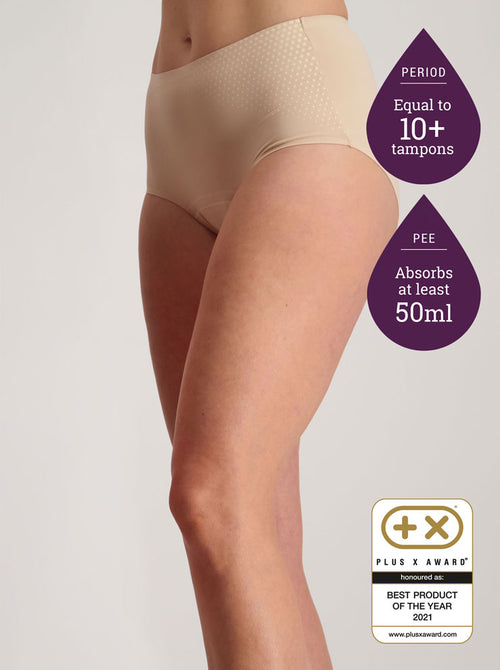Bladder retraining is an action plan recommended by health professionals for
incontinence and bladder leakage.
It’s a form of behavioral therapy that works to change your bathroom habits by altering the cognitive pathways responsible for telling your body how often you need to use the toilet, and how much liquid you expel.
Like anything, you can actually make going to the bathroom too frequently a cognitive habit, which can be detrimental and lead to an overactive bladder that thinks it needs to go more often than it really does. The converse of this is an underactive bladder, which doesn't go often enough or release a full void – and this, too can be helped through bladder retraining.
Every person is different and therefore what is considered 'normal' will vary. Generally adults urinate between four and eight times a day, but even this can be abnormal depending on the nature of your bathroom visits (for example, if they are in quick succession, if you feel a desperate need, or if you pee and then need to pee again immediately afterwards), which is why bladder retraining always takes a personal approach.
Your medical professional will recommend whether bladder retraining is the best way forward based on the symptoms you’re experiencing, but here is a general overview of what you can expect.
How do you retrain your bladder?
In the first instance, your medical professional is likely to recommend that you keep a Bladder Training Diary for a week or more to track how often you feel the need to go, how often you leak and how often you actually visit the bathroom on an average day. This is for two reasons –
1. To help you become aware and more mindful of your normal bathroom habits
2. To provide a tangible, personalized guide from which to create a realistic plan
With this diary, you may also track your consumption habits (such as coffee, spicy food etc) to see whether there are any external contributing factors to your leakage. For example, because coffee and alcohol are diuretics (increase the number of times you pee) the doctor may recommend you lessen the amount you drink or change the time of day you indulge, as both can be triggers for incontinence.
After you have reviewed this diary with your health professional, you will agree on the best way forward. It may be that every time you feel the need to go, you hold off for as little as five or 10 minutes, and as your bladder and brain regain control you’ll increase this delay over time until you are only going to the bathroom every three or four hours. Alternatively, it may be that you schedule bathroom visits. For example, if you go to the bathroom every hour and a half, you may increase that time by 15 minutes and visit the toilet on schedule even if you don’t feel the need to go.
NB: If you are desperate to go and really can’t hold off any longer, don’t worry if you can’t stick to the schedule – remain persistent and be kind to yourself, as changes won’t happen overnight!
This diary is a powerful way to get you started on retraining your mind and body. Combine it with
kegel exercises
to strengthen your pelvic floor muscles and you should notice improvement in leakage within a few weeks. If you’ve been trying to retrain your bladder for five or six weeks and haven’t noticed any changes, check back in with your medical professional – they’ll recommend the best course of action from there.
Bladder retraining is a safe, non-invasive way to regain control over leakage and incontinence. Over time, you should be visiting the bathroom less, and be able to hold more liquid in your bladder – so book an appointment with your doctor and get started today!







